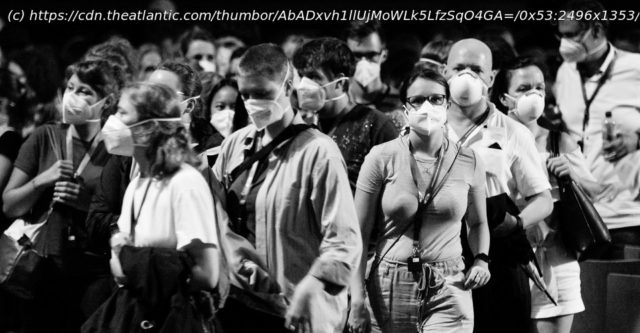And why we’re failing to do the same things in America
About the author: Yascha Mounk is a contributing writer at The Atlantic, an associate professor at Johns Hopkins University, a senior fellow at the Council on Foreign Relations, and the founder of Persuasion. H aving grown up in Germany, I am skeptical of the popular notion that life is so much more rational and efficient in the country than it is anywhere else. Those who believe that Germans are incapable of irrationality should suggest imposing a speed limit on the country’s highways. And those who believe that Germans are incapable of inefficiency should learn how much time and money were spent to build Berlin’s new airport. And yet I have, since returning to Germany about a month ago, been struck by how much more rational, efficient, and pragmatic the country’s handling of the late stages of the coronavirus pandemic has been. While the American response to COVID-19 has barely gone beyond the measures that were first adopted in the spring of 2020, Germany has phased in a series of additional policies over the past 18 months. None of them add serious disruptions to daily life, and yet they collectively put the country in a much better position to contain the virus. Partly as a result of these measures, the latest wave of the pandemic, brought on by the Delta variant, was much less severe in Germany than in the United States. And though the number of cases per capita has, of late, started to creep up—as adherence to these policies has, even in famously rule-following Germany, gotten more lax—the seven-day average remains significantly lower than in the United States, and deaths remain far lower. Germany’s response to the pandemic puts America’s ongoing failure into stark relief. But it also points to a big opportunity. At the moment, much of America’s acrimonious debate about COVID centers on the most difficult trade-offs that the country faces as it grapples with the drawn-out and still-deadly twilight of the pandemic. Should children in schools be required to wear masks? Should employees be fired if they refuse to get vaccinated? How do the benefits of vaccinating the young stack up against the risks? There may not be a way around those important questions. But instead of focusing exclusively on the most contentious restrictions, which have serious drawbacks as well as significant benefits, the country’s political officials and health authorities should adopt four measures that can slow the spread of the virus—and reduce the risk of yet another winter wave—without much of a downside. 1. Ensure That Mass Events Don’t Facilitate Mass Transmission I recently enjoyed the latest James Bond movie in a packed theater. I am writing these lines in a crowded coffee shop. Over the course of the next few weeks, I have plans to go to the opera and a soccer game. Life in Germany has mostly gone back to normal. But though the regulations governing public gatherings vary in their details from state to state, the same basic rule applies practically everywhere: Anybody who wants to dine indoors, go to the theater, or attend a large sporting event has to be vaccinated or have recovered from COVID-19 within the past six months. Those who don’t have such immunity can also participate—but only if they’ve tested negative for the disease within the past 24 hours. The goal of the rule is to allow normal life to resume as much as possible without increasing the number of infections. And by and large, it is working. In the United States, by contrast, the organizers of mass events aren’t required to ensure that attendees have little risk of spreading COVID. Many restaurateurs and sports teams are voluntarily asking their patrons to prove that they are vaccinated. And some municipalities do require that businesses adopt such policies to stay open. But many others don’t.






